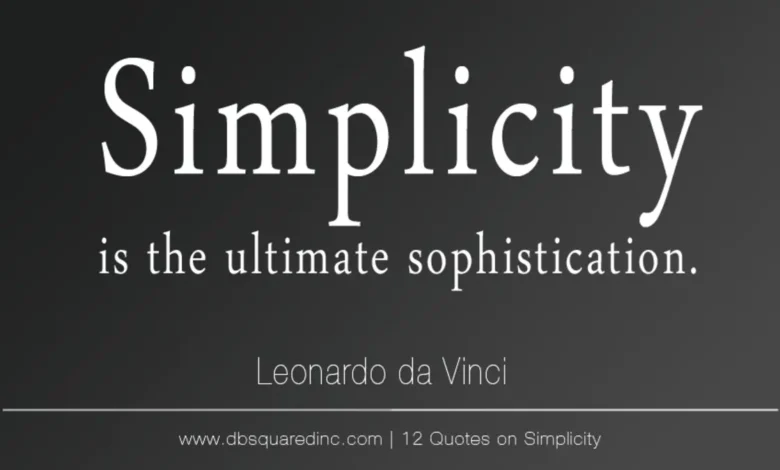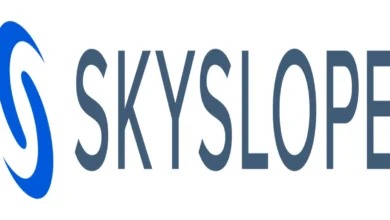Understanding Simplicity: A New Digital Evolution1

Simplicity In today’s fast-evolving world of technology, the terms and acronyms seem to change every week. One of the latest buzzwords to make its rounds is “Simplicity.” Whether you’re a digital enthusiast, a professional, or simply curious about the tech world, understanding new trends like “Simplicity” is essential. This article aims to provide an in-depth exploration of Simpcitt, its implications, and how it affects various digital domains.
What Exactly is Simplicity?
To fully understand what Simpcitt means, we need to first break it down and see how it fits into the current technological landscape. Simplicity is not just another acronym or jargon—it represents a significant shift in how we approach digital interactions and systems. The term may sound cryptic at first, but its influence can be felt in a variety of fields, ranging from online communities to advanced algorithmic processes.
The Origin of Simplicity
The term “Simplicity” is relatively new, and it seems to have emerged within niche online forums and tech-related discussions. While some may speculate that it’s a blend of “simp” and “city” (perhaps a shorthand for certain digital terms or platforms), others suggest that it refers to an entirely new classification within AI technology or digital interaction systems. The exact origins may not be entirely clear, but its applications are already beginning to surface in certain industries.
The emergence of Simpcitt as a concept was spurred by the need for more sophisticated digital protocols. It touches on areas where people are deeply involved with online identities, sometimes extending beyond social media and digital gaming spaces.
Simpcitt and Its Role in Social Media Dynamics
One of the most notable areas where Simpcitt is making waves is in the social media landscape. As social platforms grow in size and complexity, they are becoming fertile ground for new terminologies and behaviors. The concept of Simpcitt can be linked to the way individuals and communities interact with each other in online spaces.
Impact on Digital Behavior
On a fundamental level, Simpcitt influences the way users behave online. In social media settings, it manifests in how individuals react to various digital interactions, like posts, comments, or even direct messages. People today often form connections, sometimes deeply personal, with influencers, content creators, and other online personas. These interactions can sometimes blur the line between digital connection and personal affection, leading to behavior patterns that Simpcitt aims to address.
This shift in behavior isn’t necessarily new. People have always sought connection in online spaces, but with platforms becoming more sophisticated, the dynamics of such connections are changing. Simpcitt seeks to understand and quantify these new behaviors, offering insights into digital communication and interaction patterns that weren’t previously understood.
Simplicity in Digital Communities
In digital communities, especially those focused on specific hobbies, interests, or entertainment (such as gaming or fandoms), Simpcitt plays a unique role. Online forums and subreddits thrive on interactions between users who share a common interest. But as these communities grow, they can also attract an increasingly broad spectrum of people—ranging from casual observers to deeply invested fans or “super-users.”
The concept of Simpcitt in such spaces relates to how these interactions are shaped by both the technology enabling them and the individual’s engagement level. When users become overly invested in a platform or a particular persona within a community, Simpcitt comes into play to describe the nuances of this engagement.
How Simpcitt is Reshaping Digital Content Creation
Content creators, from YouTubers to Instagram influencers, are also seeing a shift in how they engage with their audiences due to Simpcitt. Traditionally, content creation was a one-way street—creators would upload content, and followers would consume it. However, the rise of interactive platforms has led to a more reciprocal relationship between creators and their audiences.
Simpcitt and the Creator Economy
The creator economy has been one of the fastest-growing sectors in recent years. Platforms like Patreon, TikTok, and YouTube have allowed everyday people to turn their hobbies and passions into full-time careers. However, this shift in the creator-audience dynamic has brought with it a deeper level of engagement and emotional investment.
With the rise of Simpcitt, content creators are seeing their influence extend into areas previously untouched. Audience members may form personal attachments to creators, viewing them not just as entertainers but as friends or confidants. This change has brought challenges as well as opportunities for creators to redefine their brand identity, their message, and how they communicate with followers.
The Psychological Impact of Simplicity on Audiences
As Simpcitt becomes more ingrained in the world of digital content creation, we start to see the psychological effects it has on the audience. When individuals form personal connections with influencers or content creators, it can result in feelings of loyalty, admiration, and sometimes even obsession. For content creators, managing this type of emotional attachment becomes crucial.
Creators need to strike a balance between maintaining a personal connection with their followers while also establishing boundaries. Otherwise, the phenomenon of Simplicity could lead to burnout or other psychological challenges, both for the content creators and their audiences.
The Technological Side of Simplicity
Simplicity isn’t just a social concept—it’s also rooted in technology. As AI and machine learning continue to evolve, Simpcitt represents a new frontier in how machines can understand and predict human behavior. This is especially relevant in areas like social media, digital marketing, and user experience design.
AI and Predicting Simpcitt Behavior
Artificial intelligence has already had a significant impact on how we interact with technology. From predictive algorithms in online shopping to recommendation systems in streaming platforms, AI is constantly adapting to our behaviors and preferences. Simpcitt is likely an evolution of this—an AI-driven understanding of digital relationships and user engagement.
The potential applications for this technology are vast. Companies could leverage AI to build better, more personalized experiences for users, predicting how people will respond to certain content or interactions. Marketers might use Simplicity-driven insights to create hyper-targeted ads that resonate on a deeper emotional level with their audience.

Machine Learning and Simpcitt Patterns
Machine learning allows computers to learn from past data and make decisions based on that information. This is closely tied to the development of Simpcitt as a concept. By analyzing past user behaviors and interactions, algorithms can be fine-tuned to detect patterns in how people engage with certain content or platforms. These patterns could inform everything from content creation to user interface design, helping creators and tech companies deliver better, more impactful experiences.
Simplicity in the Future: What Lies Ahead?
As with any new concept, the future of Simpcitt is still unfolding. We are only scratching the surface of how this digital revolution will shape the way we interact with technology and each other. However, there are some clear indications of where this is headed.
Greater Integration Across Digital Platforms
The trend toward seamless digital experiences is growing. Whether it’s logging into multiple platforms using a single social media account or having data sync automatically across devices, integration is becoming the norm. In the future, Simpcitt could play a pivotal role in this interconnected world, enabling a more unified understanding of how people engage with different platforms.
We may see future versions of Simpcitt that are even more advanced, capable of understanding the emotional and psychological states of users with a level of precision that feels almost uncanny. This could lead to new ways of personalizing experiences, helping both creators and businesses deliver content that aligns more closely with the user’s emotions and preferences.
Simpcitt and the Evolution of Digital Ethics
As Simpcitt grows in significance, so too will the ethical considerations surrounding its use. With AI-driven platforms analyzing user behavior, the lines between personalized content and manipulation become increasingly blurred. Ethical questions will arise around data privacy, emotional manipulation, and the potential for AI to perpetuate biases.
The challenge for developers and content creators will be to use Simpcitt in ways that enhance the user experience without compromising personal autonomy. Digital ethics will likely become a more significant topic of discussion as the implications of Simpcitt unfold.
Conclusion: The Rise of Simplicity
Simplicity is more than just a buzzword—it represents a shift in how we interact with digital platforms and the technology that powers them. From social media to AI algorithms, its influence is already being felt, and its potential to reshape digital landscapes is enormous.
As we look to the future, we can expect Simpcitt to play a key role in how digital interactions evolve, especially in the realms of social behavior, content creation, and machine learning. While its precise definition may still be in flux, one thing is clear: Simplicity is here to stay, and it will continue to shape our digital experiences for years to come.






